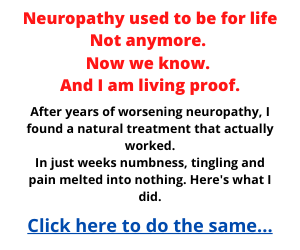Diabetes and Glaucoma - will I go blind?
Diabetes and Glaucoma - will I go Blind?
It's more frequent than you think to lose your vision unexpectedly. Blindness frequently occurs without earlier warning indications and in those who aren't conscious that they're in danger.
A lot of people lose their sight for no reason at all. Blindness can happen without warning and in people who don't know they're at risk. People wonder, "Will I go blind with Glaucoma?
What is Glaucoma?
The eye makes a small amount of fluid that looks like water in its middle chamber. This fluid flows around the lens of the eye into the front chamber of the eye. The fluid leaves the eye through a drainage system and then goes into the bloodstream.
Most of the time, glaucoma causes the drainage system to become blocked, and fluid gets stuck in the eye. A nerve at the back of the eye gets a lot of pressure because of this. Because of glaucoma, this nerve might get hurt.
How does glaucoma start in Diabetic person?
People who have glaucoma don't have enough drainage, so the fluid can't go back and enter the blood stream. This fluid puts more pressure on the optic nerve and Iris, which hurts the other optic nerves.
What are the symptoms of diabetic Glaucoma?
Diabetic glaucoma can happen without any signs or pain. In some cases, there is an abnormal growth of new blood vessels around and near the retinal area. These new blood vessels can cause bleeding that makes it hard to see.
The typical symptoms are as follows
§ Sudden changes in vision / blurred
vision
§ Eye floaters and spots
§ Double vision
§ Eye pain
However, keeping blood glucose levels well controlled can help to significantly slow down the development of retinopathy.
Diabetes and glaucoma are the two most common causes of blindness that happen out of the blue, but they can happen to anyone. These diseases are called "sneak thieves of sight" because they don't show up until they're already in progress. The sooner someone notices something is wrong, the more likely it is that they will lose their vision permanently.
In fact, diabetic eye disease is the leading cause of adult blindness. Every day, an estimated 55 Americans are blinded by the disease. Diabetes is becoming more common as a result of poor eating habits, infrequent exercise, and an ageing population, and the numbers are expected to rise sharply. One in every three children born in the United States five years ago is expected to develop diabetes.
As many as 70% of people who have diabetes lose some or all of their vision. It's still true that 30 percent of people who have diabetes don't even know they have it. Even people who know they have diabetes don't think about the risks they face very much.
According to a poll sponsored by Lions Clubs International, 60 diabetics in attendance expressed no concern about going blind or losing a limb. In reality, 74 percent of diabetics will experience catastrophic problems, including blindness, amputation of a limb, or kidney failure.
Other than that, glaucoma are eye diseases that slowly damage the nerves that connect your eye to your brain. These nerves are very small and connect your eye to your brain. A lot of people get this kind of damage when the pressure in their eyes is too high. When these nerves are hurt, vision may be lost.
One in three American adults is at risk for developing glaucoma, the second largest cause of blindness in the country. Many people are unaware of the disease, as is the case with diabetes. Glaucoma affects an estimated 4.2 million Americans, although only half of them are aware of their condition.
Diabetes and glaucoma are particularly common among blacks and Hispanics. These populations are thought to have a genetic predisposition to the diseases and are far more vulnerable than Caucasians. People over the age of 60, those with a family history of glaucoma, diabetics, and the very near-sighted are also at increased risk for glaucoma.
When someone has their eyes dilated, they can find both diseases and get treatment early, which can save their sight. A group of vision experts says that people who are at risk should get their eyes checked every few months or so.
Raising awareness of diabetic eye disease and glaucoma is critical to avoiding avoidable blindness. Lions Clubs International collaborates with Lions clubs, community groups, and individuals to raise awareness of the importance of early detection and treatment of the two diseases. The Lions Eye Health Program distributes materials at health fairs, senior citizen centres, and other similar gatherings. It also provides strategies for increasing public awareness of eye diseases.
When you have diabetes for a long time and you don't know, it can do a lot of harm to you without you even realising it. It can also do this without warning.
Type 2 diabetes is completely curable, and you can get rid of it if you follow a few simple rules. This way, you can protect yourself, particularly your eyes, from harm. You can keep your limbs and every organ in your body from being amputated if you are aware and act quickly.
What is the Solution to avoid this?
We advise you to seethis video presentation here to know more – how to be prevented and get
rid of type 2 diabetes.
 Reviewed by Diabetes Truths and Control
on
4:07 PM
Rating:
Reviewed by Diabetes Truths and Control
on
4:07 PM
Rating:





























